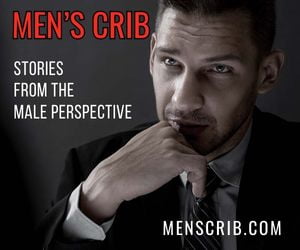Back on August 28 Greg forwarded me this email from Democratic political … something Gerry Chervinsky:
Hi Greg, I’m writing just to say that if you’re looking for a fun blog pic, someone should check out the corner of Ionia & Wolcott in Auburndale, where “third party” governor candidate Evan Falchuk lives. He’s got 2 of his campaign signs on the corner, violating 2 Newton ordinances: 1) one sign per candidate per property and 2) no signs posted until 45 days pre-election, which in his case doesn’t occur til Nov. I’d send you a pic myself but my ancient iPhone camera is on the fritz! Maybe you could get Julia Malakie to do it, she lives nearby. Anyway just a thought, enjoy the rest of summer! Gerry
I don’t know what surprised me most — that Evan Falchuk lives so close to me, that his signs were on a corner I drive by almost every day and I hadn’t noticed them (sorry Evan), or that Gerry Chervinsky, whom I’ve never met, knows where I live. But I took a look and for a few days there was indeed one sign that I could see driving down Wolcott. On Friday there were two, but I was running late and didn’t have time to stop, but yesterday I did. So here are the offending signs.
It is true, two violations, timing and number — I checked the ordinance again myself. But I was reminded of Cohen v Cowles Media Co., in that I thought the fact of who was dropping the dime was more interesting than the information itself. But unlike Cohen v Cowles Media, in which the political operative had been promised anonymity by a reporter, this unsolicited tip did not include a request for anonymity, perhaps surprising coming from someone with such a penchant for aliases.
In the meantime, in my travels taking dead tree pictures and whatnot, I noticed that Evan Falchuk is not the only offender. I saw two Steve Grossman signs at 275 Waverley Ave (bottom right in photo above). Then yesterday I saw another pair at 391 Waverley (top right). And I don’t know what it is about Waverley, but there were two Deb Goldberg signs at #31, on the berm on the Tremont Street side. (Any type of sign on the public right-of-way is another violation.) I had also noticed two Warren Tolman signs in a yard somewhere around Melrose Street, but did not write down the address, and couldn’t find them again.
Personally, I don’t get nearly as bent out of shape by political signs as I do by signs on trees. Big ones, multiple ones, go to town! I like that people care enough about a candidate to say so. Except for here in Ward 3 with our alderman race, it’s depressingly bare of signs for a statewide election year. (Try to find a Coakley sign — it’s like looking for a Wyoming license plate.) It seems to signify apathy. I hope turnout proves me wrong, but am not optimistic.
There, that’s taken care of. My next post will be about something of more consequence.


Aren’t signs allowed before primaries?
Evan Falchuk isn’t running in the primary.
Most households that host these signs probably don’t know about the one sign per candidate law. But they get the signs from campaigns that should and do know better.
And whoever planted the two Warren Tolman signs that I just saw on the Comm Ave median, one on either side of Valentine, should know better, too!
I’m usually a stickler about the law because the city is flooded with so many for months during a local election. But there hasn’t been much of a sign presence so the ones that are up haven’t made the city look unsightly. In fact, people often pick up their signs at an event or an office, so I’m not sure the candidates are even aware of where the signs are. I have 2 signs, and don’t think that either campaign knows that I have them.
I’ve never seen so few political lawn signs in any past statewide campaign. Not the same level of enthusiasm by passing motorists when I’ve been holding signs at intersections this go around.
Yes, it kind of makes me want to get a couple of Falchuk signs and plant them in *my* lawn.
If the rule is putting a candidate at a disadvantage in terms of election season exposure because the candidate has no primary competition, we should respect conscientious protestors.
If I were so inclined, I’d call these candidates and tell them they are breaking the rules. However, I did that once before and the candidate didn’t care. So, my rule is simple, if the candidate can’t follow simple election rules and ordinances, then I can not trust that they will do the right thing when in office. I realize that the candidate may not have been the one who placed the signs in the wrong place but once it is pointed out, I feel they have an obligation to respond to the location, correct the violation and inform their supporters of the rules. If they can’t be bothered, I can’t be bothered to vote for them.
Many similar ordinances that control political signs in other communities around the country have been challenged and overturned as unconstitutional infringements on the First Amendment. These ordinances should have been removed from the books by the BoA in Newton years ago. They remain because their principle intent and function is to protect incumbents from political challengers.